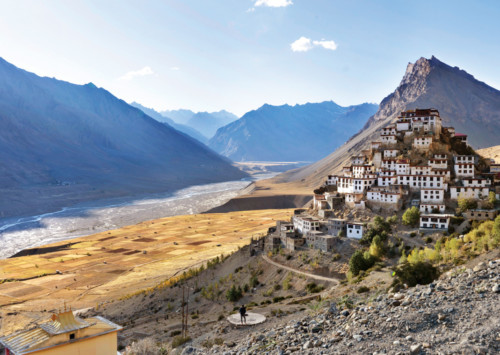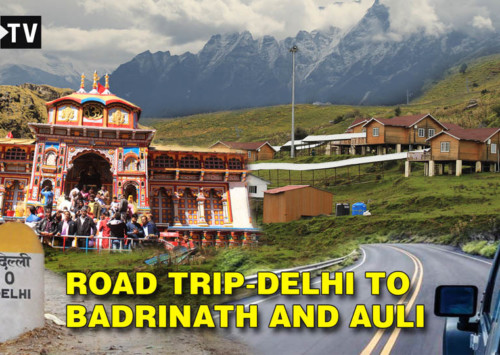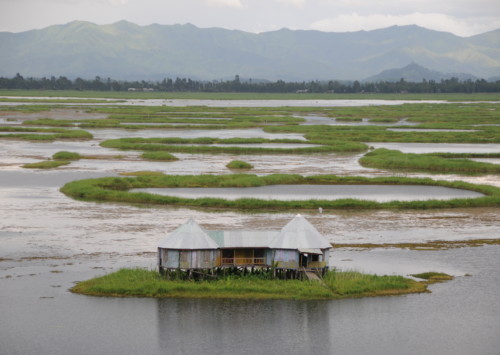Spiti valley: exploring along the lap of Himalayas

A journey to Spiti valley is an experience to be cherished for lifetime. We are back with the second installment of our episodic account of a trip to the Spiti valley.
When we set out from Delhi to Himachal Pradesh, Spiti was a beautiful but uncharted land that bikers and extreme sports enthusiasts love to explore. The aura around the trip was that of exploring a part of the Himalayas that is well-known, yet not many dare to explore. We had reached our first stop Shoghi the first day and our second day began with our journey towards Narkanda.
Glamping in Narkanda
Nestled at about 2,500 m and famous for its skiing pistes during winter, Narkanda in September is full of apple trees and known for its abundant nature and Hatu peak, the highest point in the vicinity. We were obliged to spend the entire day indoors due to incessant rain, but the time was well-spent in getting to know others on the same trip as us.
After a night of heavy rain, we were once again set out for a day-long journey. Our next destination was Sangla valley, about 230 km north east of Shimla and barely 100 km from the border with China.
You start seeing a major change in mountains as you head out towards Sangla, which is also the last town equipped with public telephones as well as internet. In the month of September, the roads are crowded with trucks carrying luscious apples, the main produce of Sangla, to the markets all over India.
Our destination in Sangla Valley was a small village called Rakchham which lies right between the mountains and beside river Baspa. When we arrived late evening, the mountains around us had splashes of colours like green, yellow and red and from our campsite, we could see mountain peaks which were already covered in snow.
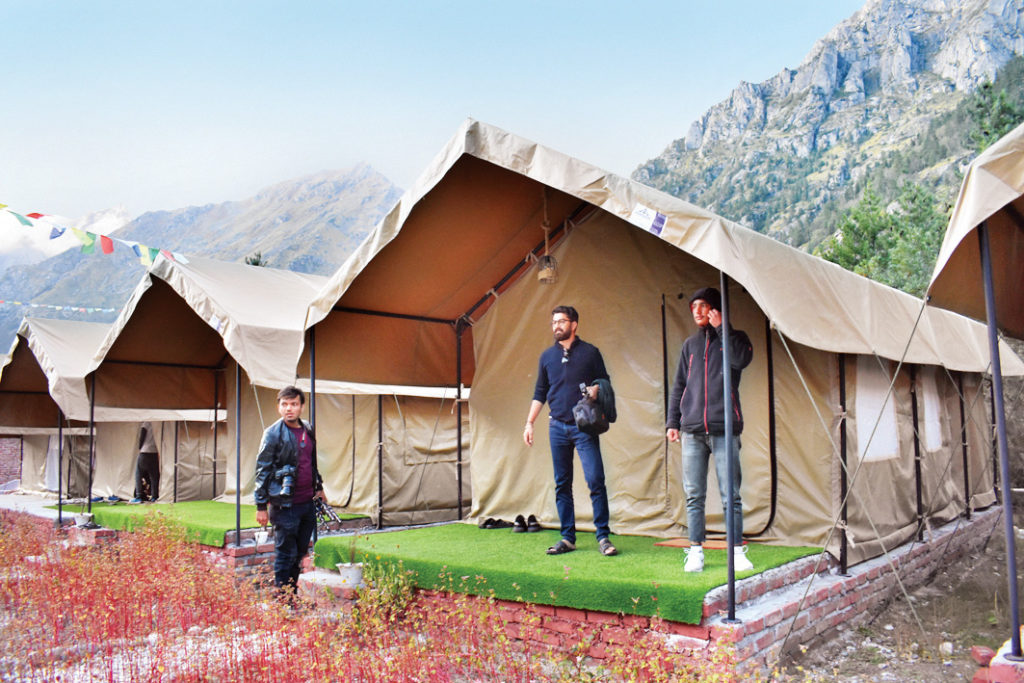
Eskape Adventure Camps in Rakcham
We stayed overnight in a small but cosy campsite called Eskape Adventure Camp, which was being run by Pradhuman Singh Negi, a retired personnel of the Indian Army. Over the campfire that evening, the veteran shared few of his army stories and explained how he was running this camp to make people aware of natural disasters that take place in the mountains and prepare them to face it better.
As the night drew closer, Negi caught some fresh trout fish for us and cooked it to perfection. He explained that his camp uses natural resources like solar power panels to light the campsite as well as to heat water. Once the camp lights are turned off at around 9 pm, one can relish the view of a dark sky, illuminated by millions of twinkling stars, with the echo of the waters of Baspa running in the background.
As we woke up the next day, we realised that our body clock had adjusted on its own to the mountains and we didn’t need an alarm to wake up at the break of dawn, just before 5 am. The night’s sleep and cool and fresh mountain air had refreshed us completely and the sight of golden hues on the peaks, with lilting tunes of various birds lured us out of beds rapidly.
The early morning breeze and freshwater running right beside our camp was just the start to the beauty of the area. Since we were surrounded by high peaks on all sides, we could trace the journey of the sun as it rose, zigzagging between various mountains. While half the peaks were still in darkness, others were brightly lit with golden hues that had even transposed on acres upon acres of orchards and green pastures, thanks to the early morning dew.
The beauty notwithstanding, our hosts did forewarn us that the day’s journey could be bumpy and dusty. Not even two hours into our drive, we realised that bumpy was an understatement as along with bumpy ride came shooting stones and kilometres upon kilometres of dusty mountains.
Yet, despite the excess amount of fine dust, there was a certain beauty even in these parts of the Himalayan peaks. Different shades of gold, brown and white made the peaks a view to behold and one could spend hours just staring at the landscape of these high altitudes. One could get an idea of the height just by looking at the Spiti River, that ran along the road, and looked like a thin ribbon of silver.
Moving with the Milky Way
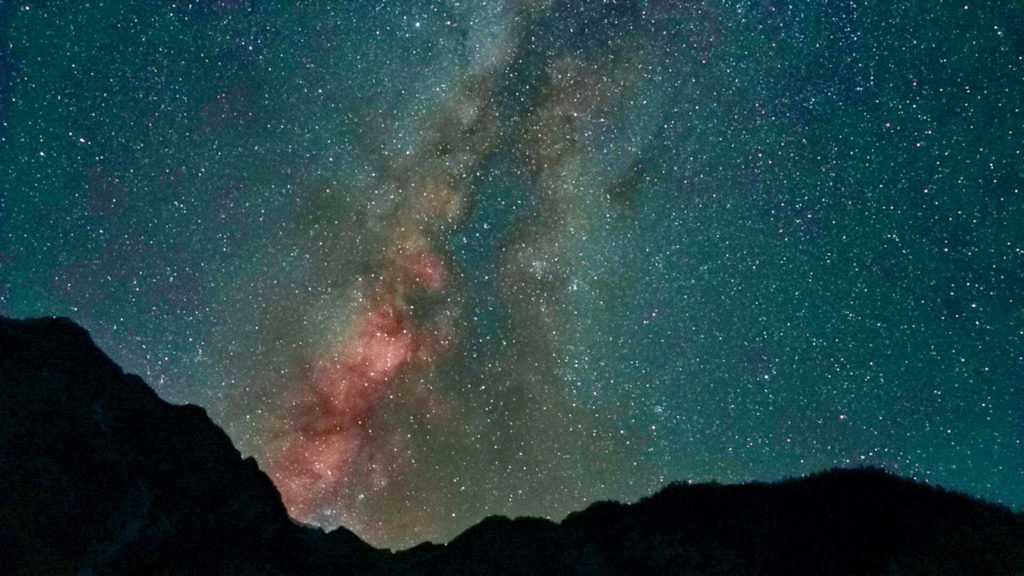
The ever present Milky Way
By mid-afternoon, we were witnessing a sunset that was almost the opposite of the sunrise. The setting sun gave the mountains a feeling of desert heat which would soon turn to the winter chill.
As we drove almost literally on the edge of these mountains, the setting sun lit the mountains in front and behind us, but always kept us in the shadows. Within half an hour, darkness had set and we saw a new beauty of the cold desert mountains.
We could see the Milky Way moving along with us, making us feel that thousands if not millions of stars surrounded us. The night drive gave us a new thrill in exploring these mountains.
There was no life or light around us for kilometres and if any other cars approached our direction, we could spot the headlights from far, even when the car was on another mountain.
The sound of the Spiti River was still audible but it was the sky that caught our attention. Amongst countless stars, the Milky Way shone brightly and we could also easily spot shooting stars and satellites. Our host had sent a crew ahead of us to set up the camp, with numerous tents, all with attached bio-toilets for convenient use.
Famished as we were, we quickly freshened up and gathered for evening snacks, which in the circumstances and due to our location, appeared to be something fit for the Maharajas. In the middle of nowhere, the chefs had managed to serve up a variety of dishes notably paneer (cottage cheese) and chicken tikka for us and we were soon enjoying the food and drinks over a bonfire.
There was also a gazebo set up for the guests to gather and enjoy small talks with their fellow travellers. The camps which would become our home for the next two days had comfy bed setup with duvets to keep us warm.
Soon, it was dinner time and we were served a sumptuous meal that comprised of rice, naan, mixed veggies, daal (pulses) and chicken curry. Our hosts told us that just like the itinerary they also customise food according to their guests and even have a special pet policy which allows the guests to bring their furry family members who would get their own food menu. With our stomachs filled, it was not long before we were lost in the world of dreams as we had to wake up early for our long journey the next morning.
To be continued…

